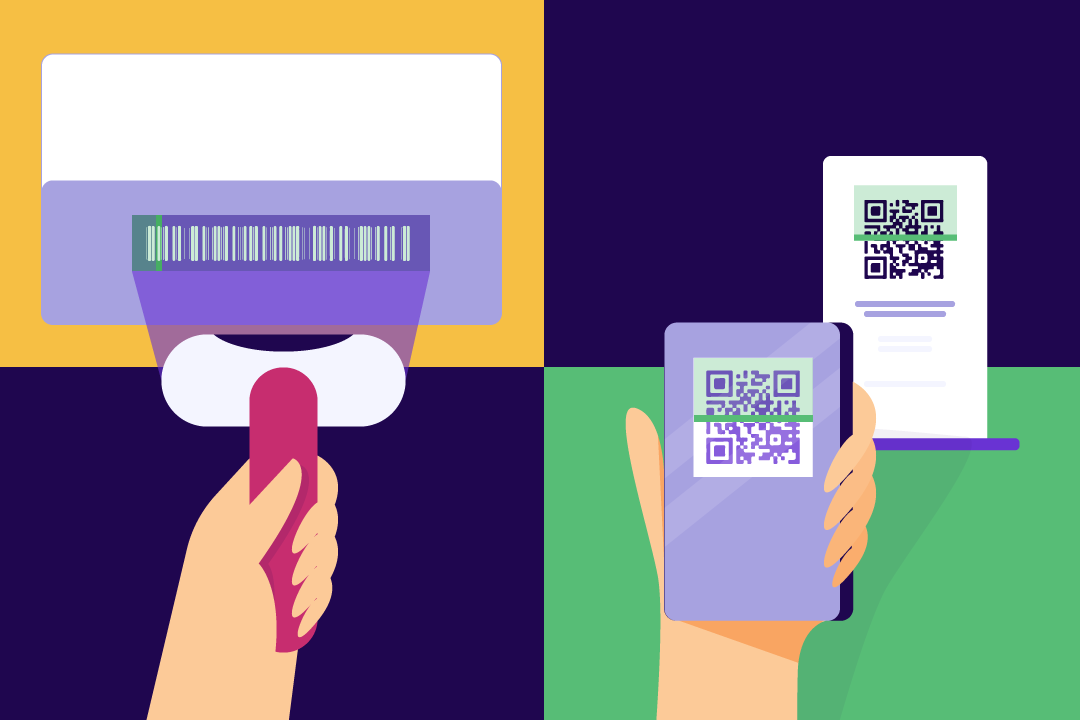In the realm of product identification and information retrieval, barcodes and QR codes stand out as two widely used technologies. Both serve the fundamental purpose of encoding data for quick and efficient scanning, but they differ significantly in terms of design, functionality, and versatility. This article delves into a comparative analysis of QR codes and barcodes, exploring their origins, working mechanisms, applications, and the distinct advantages each brings to the table.
1. Origins:
Barcodes:
Barcodes, often referred to as one-dimensional or linear barcodes, have a longer history dating back to the late 1940s. The first barcode system was patented in 1952 by Norman Woodland and Bernard Silver, and the technology gained widespread adoption in the retail industry during the 1970s.
QR Codes:
QR codes, on the other hand, are a more recent innovation, originating in the early 1990s. Developed by Masahiro Hara at Denso Wave, a subsidiary of Denso Corporation, QR codes were initially designed for tracking automotive parts during manufacturing.
2. Design and Structure:
Barcodes:
Barcodes are characterized by a series of parallel lines and spaces of varying widths. The information is encoded horizontally, and the scanner reads the differences in line thickness to interpret the data. Traditional barcodes, such as the UPC (Universal Product Code) and EAN (International Article Number), have limited data capacity.
QR Codes:
QR codes, or two-dimensional barcodes, have a square matrix pattern of black squares arranged on a white background. This matrix structure allows for encoding data both horizontally and vertically, significantly increasing their data capacity compared to traditional barcodes.
3. Data Capacity:
Barcodes:
Barcodes generally have lower data capacity compared to QR codes. They can store numeric and alphanumeric data but are limited in the amount of information they can encode.
QR Codes:
QR codes excel in data capacity. Their two-dimensional nature allows them to store a variety of data types, including numeric, alphanumeric, binary, and special characters. The larger the QR code matrix, the more information it can encode.
4. Application Range:
Barcodes:
Barcodes are commonly found in retail settings, used for product identification and inventory management. They are also used in libraries, healthcare, and logistics for tracking purposes.
QR Codes:
QR codes have a broader application range. Beyond retail, they are extensively used in marketing, healthcare, travel, and various industries. QR codes enable quick access to information, website links, and interactive content.
5. Scanning Process:
Barcodes:
Barcodes are scanned using laser or LED-based scanners that read the variations in line thickness. Scanning requires a direct line of sight and is generally less forgiving in terms of positioning.
QR Codes:
QR codes are scanned using camera-equipped devices, such as smartphones. The scanning process is more versatile, allowing users to scan from various angles and distances. This has contributed to the widespread adoption of QR codes in diverse settings.
6. Versatility:
Barcodes:
Barcodes are somewhat limited in terms of versatility. They are effective for basic identification and tracking purposes but may lack the flexibility needed for more dynamic applications.
QR Codes:
QR codes are highly versatile. They can store dynamic information, support customization, and have found applications in marketing, healthcare, contactless payments, and more.
Conclusion:
While both barcodes and QR codes serve the essential function of encoding data for quick scanning, their differences in design, data capacity, and versatility set them apart. Barcodes, with their historical roots in retail, remain relevant for basic identification purposes. In contrast, QR codes, with their two-dimensional matrix structure, have become a powerhouse of information retrieval across diverse industries. The choice between the two depends on the specific requirements of the application, with QR codes often offering a more feature-rich and adaptable solution in the modern digital landscape.

